No products in the cart.
When the River Was Unbridled
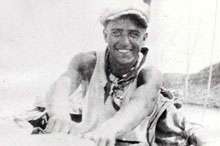
By Jo Deurbrouck
“No man steps in the same river twice, for it’s not the same river and he’s not the same man.” -Heraclitus
I’m standing in the Museum of Idaho. This is not the new part, which is mirrored on the outside, tall and bright on the inside, and currently hosts an exhibit of carousels. I’m in the original museum, once Idaho Falls’s first public library.
This is where you go in my town to contemplate the significance of small things that were but are not. Things like the fact that one day in 1915, four women in long skirts, two men in bow ties, and a scruffy boy in overalls paused a game of croquet long enough to pose for a camera.
Cover of The Last Voyageur: Amos Burg and the Rivers of the West.
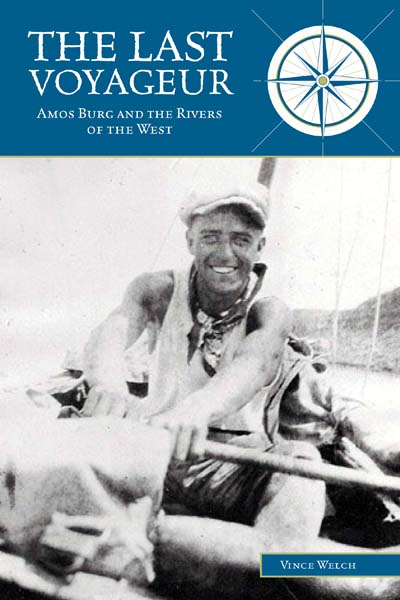
Old Town canoe. Courtesy Vince Welch.
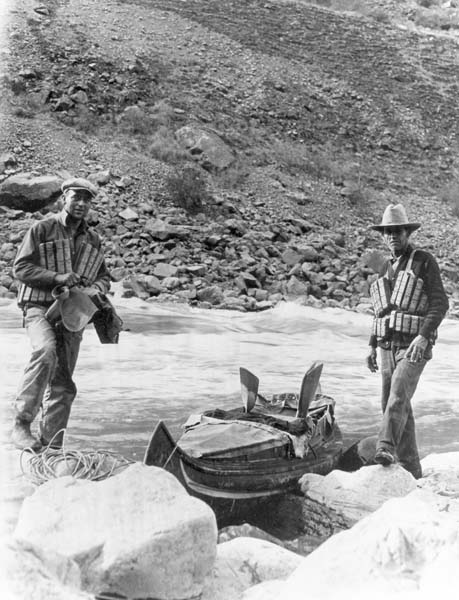
Map from The Last Voyageur. Courtesy Vince Welch.
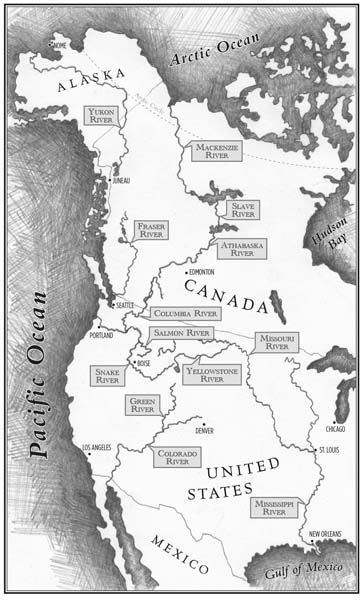
It is silent in this room. From the new wing comes faint calliope music.
I have been here many times. Here in this museum but also here in the larger sense, in an old building or, more often, the pages of a book, pondering black and white photographs, grateful to the people who work to preserve such things. Not long ago, one of them wrote to me. His name is Vince Welch. He spent five years working on a book called The Last Voyageur (The Mountaineers Books, 2012). It’s a detailed chronicle of a man named Amos Burg, a restless, romantic adventurer whose life spanned the twentieth century and whose journeys spanned the world.
Welch said while he was researching Burg, he’d pedal his bike through congested downtown Portland to the quiet refuge of the Oregon Historical Society. Sifting through the fifteen or so file boxes that held Burg’s effects, he’d be enveloped by a fragile, disintegrating-paper smell that made him think of “an old woman’s house [or] a backpack full of gear and ropes and climbing clothes.” He said that smell carried him back in time.
As his book carried me.
In 1922, the young Burg completed a five-month, 3,800 mile voyage down the Yellowstone, Missouri, and Mississippi Rivers in a canoe he would smash and replace at least four times over his life, but which he always named “Song O’ the Winds.” As he would many times, Burg began his journey with companions, completed it lonely and alone, and immediately began planning the next. As he would many times, he survived mishaps that sound foolish to today’s river runners, whose modern advantages include accurate river maps, waterproof bags, and wetsuits.
Burg eventually ran all the great rivers of the West from source to sea. He journeyed to Alaska, Patagonia, and beyond. He funded these journeys however he could, but mostly through photographs, videos and articles, often for National Geographic. It was a big life, and Welch’s decision to detail as much of it as possible makes for a big, unwieldy book. But it’s a book absolutely crammed with fragments of a past that feel precious to me, a longtime river runner who has lived long enough to see the West shrink.
One of these fragments is a photo of Burg and a man named John Mullins, posed unsmiling before Burg’s “Song O’ the Winds.” The men are about to run Hells Canyon on the Snake River. To guard against capsizing, the canoe has been fitted with a loose, flimsy-looking canvas cover. The men’s ill-fitting lifejackets appear to be constructed of vertical slabs of cork. If a party showed up in Hells Canyon with that gear today, the ranger would forbid its launch.
Another such fragment is the fact that, in 1984, three years after Burg’s final journey and two years before his death, having watched the damming of nearly every river he’d known, the old boatman wrote an article he called, “The Voyageur’s Lament.” In it, he argued with gentle regret that “the way we treated rivers . . . revealed our national character.”
By then Burg was likely the only living man to have known these rivers in a near-natural state. Nobody today does.
Still in the old wing of the Museum of Idaho, I peer at one last photo, circa 1909. It’s of downtown Idaho Falls. Canvas awnings shade store windows. Buggies are parallel parked, intermingling with a few box-shaped cars that probably drew glances from passersby that sunny day.
I walk out the heavy double doors and into the rush and noise of the twenty-first century. This is my time. It’s where I belong. But in the back of my mind I hold onto the scent of horse and canvas and, yes, of wet wood overlaid by the sharp, silty warning smell of an unbridled river. My heart beats a little faster and I smile. Once there was time for croquet. A ride to town in a buggy. Once there was room for wild rivers and a man as restless and romantic as Amos Burg.
The Last Voyageur: Amos Burg and the Rivers of the West, by Vince Welch (The Mountaineers Books, 2012), $24.95 in paperback, is available wherever books are sold, including many outdoor and paddling shops.
This content is available for purchase. Please select from available options.
Register & Purchase Purchase Only
Register & Purchase Purchase Only

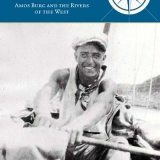
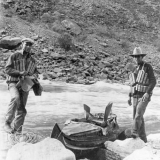
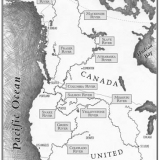

Comments are closed.